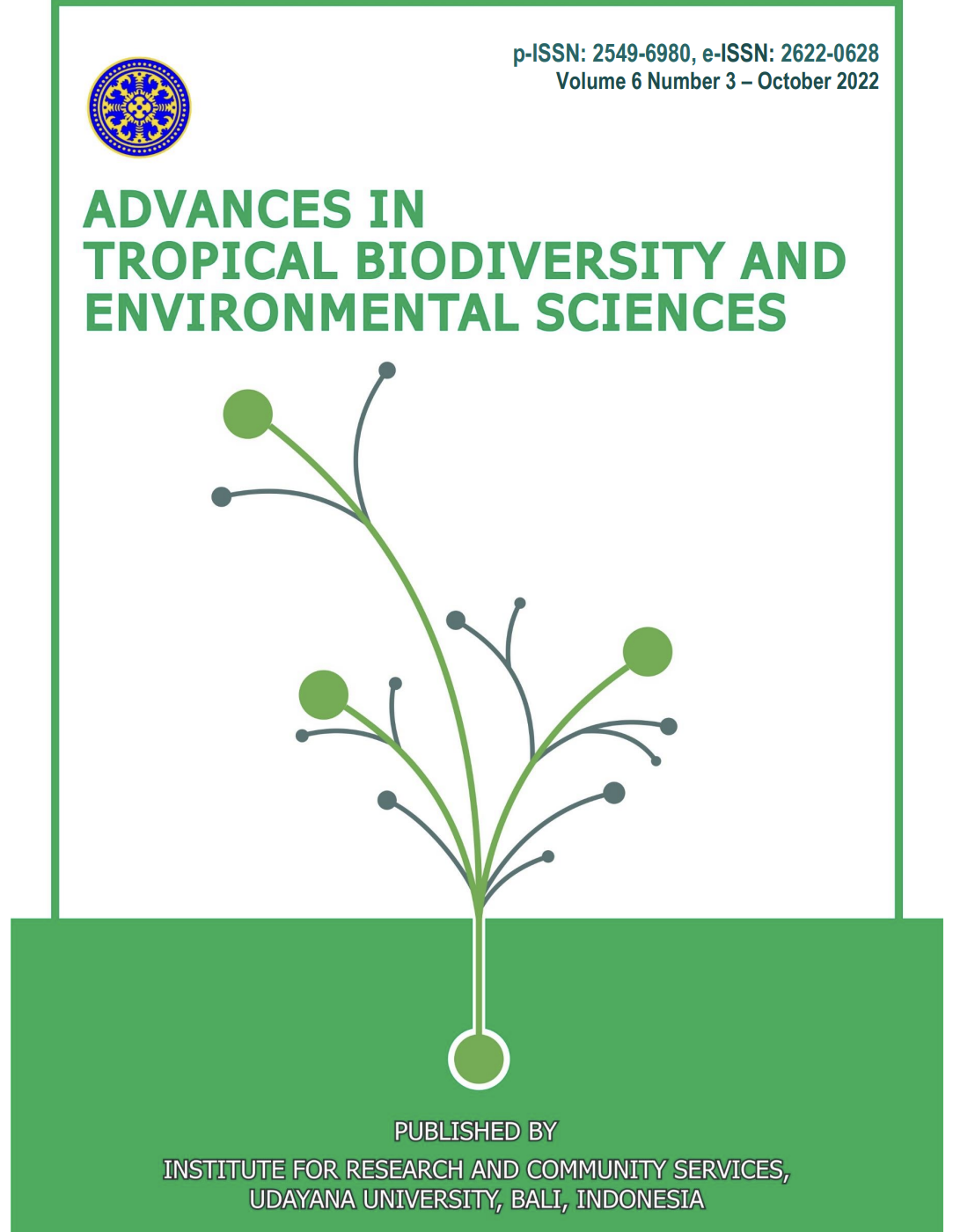Planning of Vegetative Structures for Coastal Protection Based on Analysis of the Results of Coastal Substrate in Palu Bay
Abstract
An earthquake followed by a tsunami occurred on September 28, 2018, in Central Sulawesi. National Disaster Management Agency recorded that 2,113 people died from the earthquake and tsunami, spread over 1,703 people in Palu City, 171 people in Donggala Regency, 223 people in Sigi Regency, 15 people in Parigi Moutong Regency, and Pairskayu Regency with a total of 15 people. 1 person. According to satellite imagery data obtained [2], damage to buildings that occurred in Palu City reached 2,403 buildings and caused the paralysis of Palu City from various aspects, around 70,000 people were accommodated in temporary shelters. Structural mitigation efforts to reduce the impact of damage from natural disasters can be done naturally or artificially. One of the natural structural mitigation efforts in the coastal area of ??Palu City is the creation of a coastal green belt or generally called a Greenbelt. Planting coastal vegetation and mangroves and maintaining existing coastal forest ecosystems is a disaster mitigation effort. Coastal forest ecosystems and mangroves have strong and sturdy root systems that can grip the deepest soil layers. The canopy is flat and dense, and dense at all times, making coastal forests and mangroves an ideal natural protection against the threat of disasters in coastal areas. The purpose of this research is to plan the formation of coastal forests (Planning Vegetative Structure for Coastal Protection) in Palu City Bay. The method used in this research is a descriptive method, namely by field observation, which is carried out to determine the existing condition of vegetation in the coastal area of ??Palu Bay. Based on the results of the analysis, at 23 measurement points, it was found that the thickness of the fine sediment at the bottom of the water ranged from 1-10 cm, while the results of the analysis of the thickness of the coarse sediment ranged from 1-26 cm. The sediment population in Palu City has the characteristics of Gravel (gravel) and Sand (sand). The potential content of TSS in the water column reaches 188 mg/L.
Downloads
References
[2] BMKG. 2018. Meteorology, Climatology and Geophysics Agency.URL: http://www.bmkg.go.id/BMKG_Pusat/Informasi_Cuaca/Prakiraan_Cuaca/Prakiraan_Cuaca_Indonesia.
[3] Bosello, F., & De Cian, E. (2014). Climate change, sea level rise, and coastal disasters. A review of modeling practices. Energy Economics, 46, 593–605. https://doi.org/10.1016/j.eneco.2013.09.002
[4] Cutter, S. L., Burton, C. G., & Emrich, C. T. (2010). Disaster Resilience Indicators for Benchmarking Baseline Conditions. Journal of Homeland Security and Emergency Management, 7(1). https://doi.org/10.2202/1f47-7355.1732
[5] Harada, K., Imamura, F. 2003. Study on The Evaluation of Tsunami Reducing by Coastal Control Forest for Actual Conditions. Asian and Pacific Coasts 2003 -2nd International Conference.
[6] Irwanto. 2007. Vegetation Analysis for Management of Protected Forest Areas
Marsegu Island, West Seram Regency, Maluku Province (thesis).Yogyakarta : Gajah Mada University.
[7] Li, Z., Valladares Linares, R., Abu-Ghdaib, M., Zhan, T., Yangali-Quintanilla, V., & Amy, G. (2014). Osmotically driven membrane process for the management of urban runoff in coastal regions. Water Research, 48(1), 200–209. https://doi.org/10.1016/j.watres.2013.09.028
[8] National Disaster Management Agency (BNPN), 2018. Report of Palu City Earthquake Victims”
[9] Popular Scientific Book Publisher, Bogor. rasatriya, A. 2006. A Study of Sea Level Rise as a Basis for Overcoming Rob in the Coastal City of Semarang.
[10] Rifardi, 2008. Sediment Texture: Sampling and Analysis. Pekanbaru. UNRI Press.
[11] Rifardi, 2012. Modern Marine Sediment Ecology Revised Edition. Pekanbaru. UNRI Press.
[12] Indonesian National Standard (SNI), 2004, Method of Gravimetric Total Suspended Solids (TSS) test, SNI 06–6989.3–2004
[13] Tampubolon, S. 2010. Sediments in Muara Aek Tolang Pandan, North Sumatra. Thesis of Marine Science UNRI Pekanbaru.115 Journal of Sea Sand, Vol. 1, No. 2, 2006:31-42.
[14] UNISDR. (2017). In support of the Sendai Framework for Disaster Risk Reduction. United Nation Office for Disaster Reduction (UNISDR).
[15] Wi Diposaptono, S., Budiman, and Firdaus, A. 2009. Coping with Climate Change in Coastal Areas and Small Islands.













